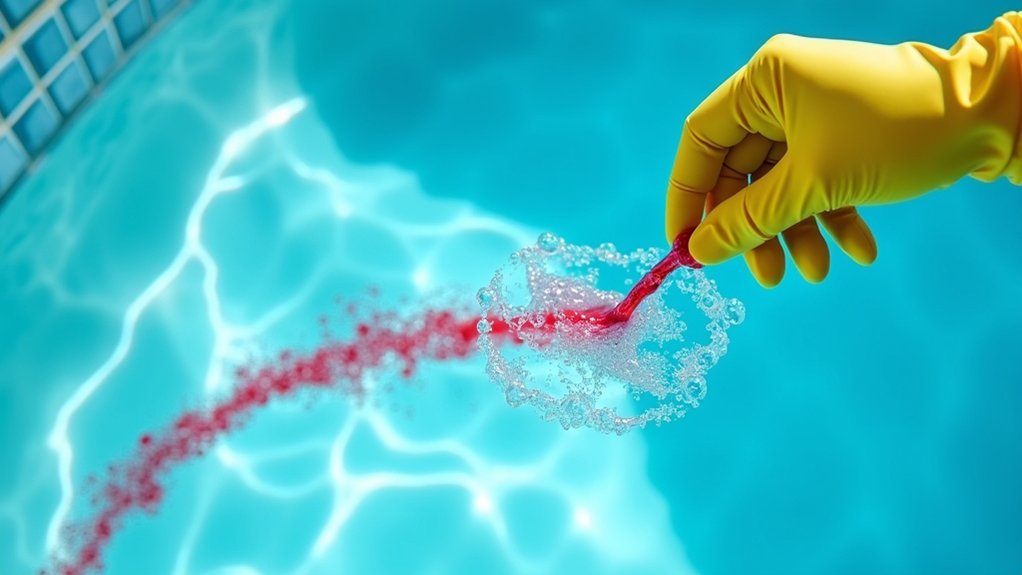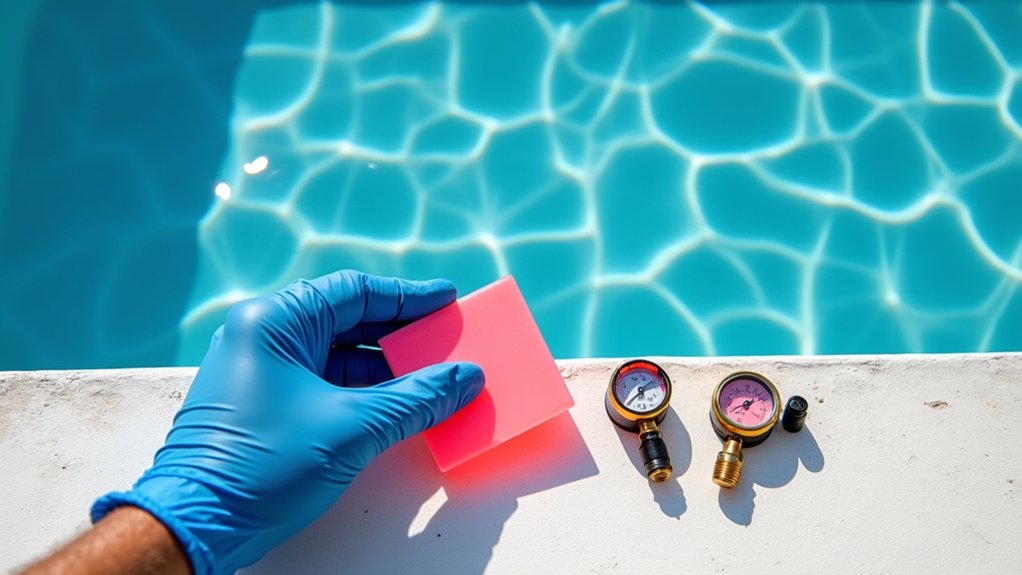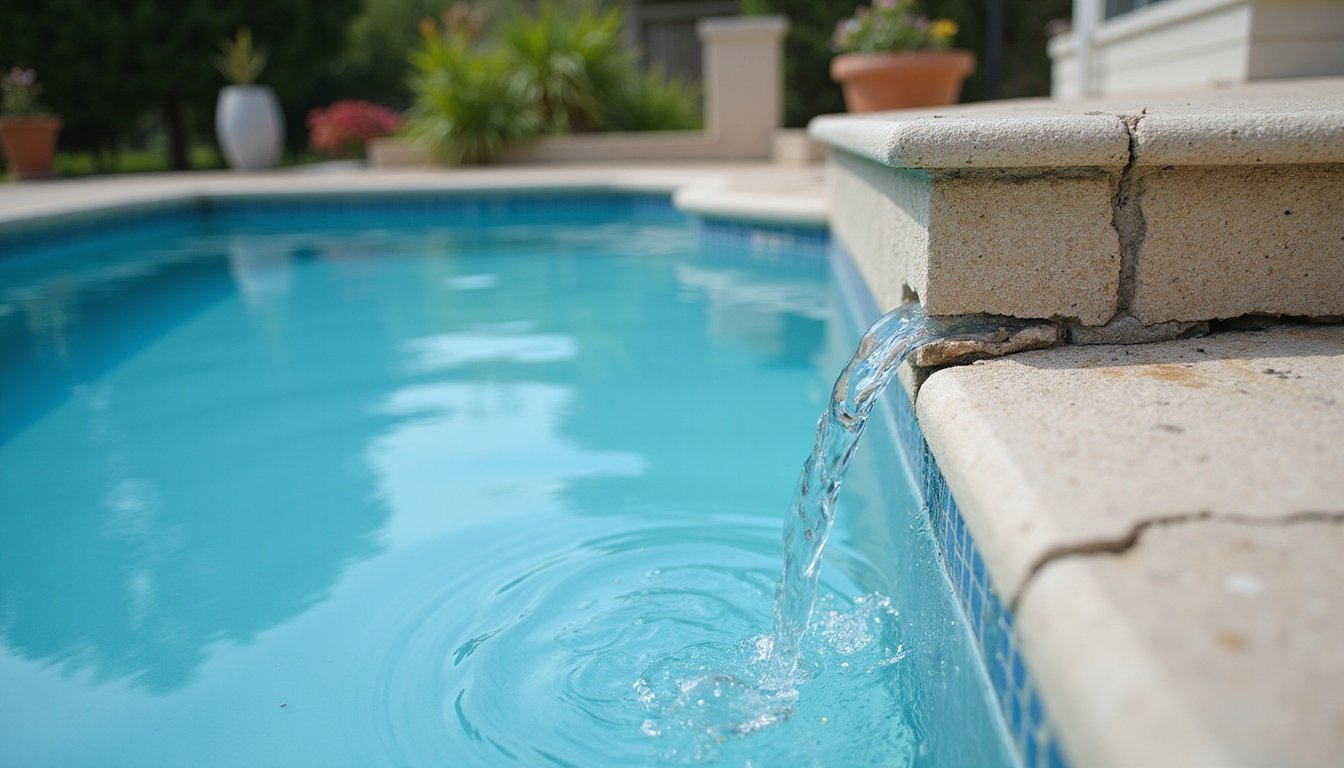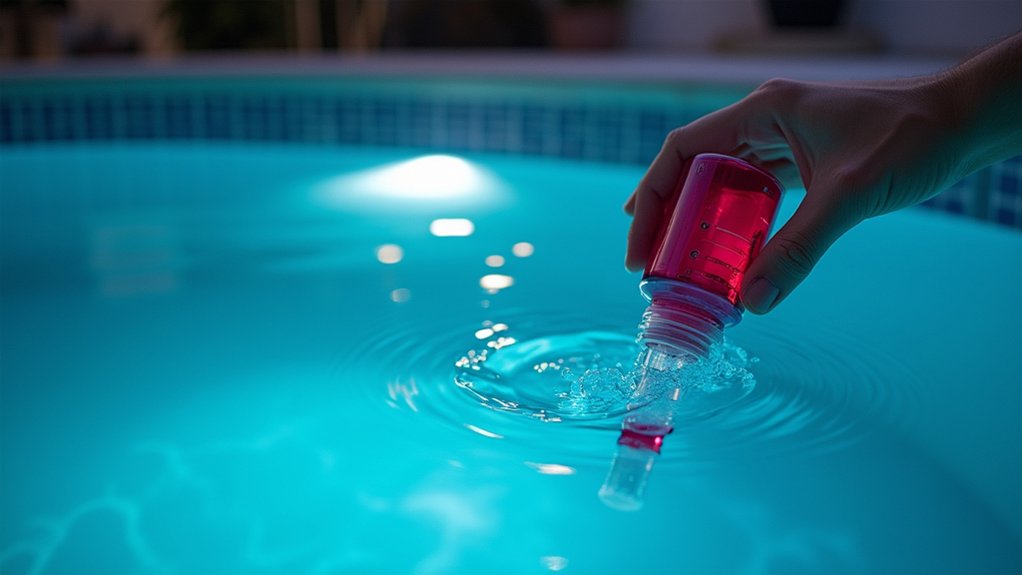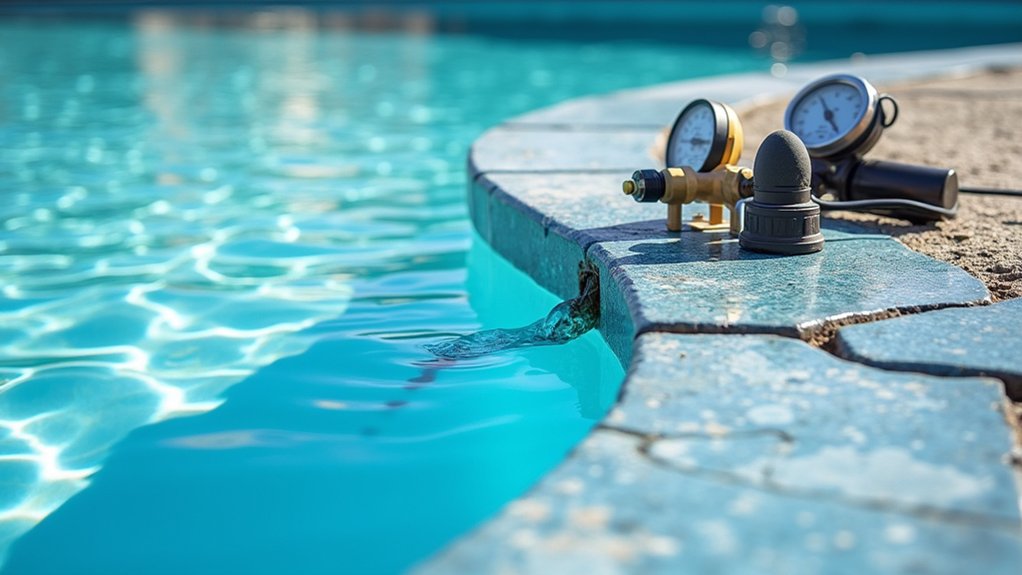Robotic pool cleaners work through integrated systems that combine autonomous navigation, specialized propulsion, and intelligent debris collection. You’ll find they use advanced sensors and mapping algorithms to navigate while dual-drive systems power their movement across surfaces. Their mechanics include high-GPH suction, dual-stage filtration, and brush agitation to capture debris from leaves to microscopic particles. The complex interplay of these mechanical and electronic components reveals a sophisticated engineering marvel worth exploring further.
The Brains Behind Autonomous Operation
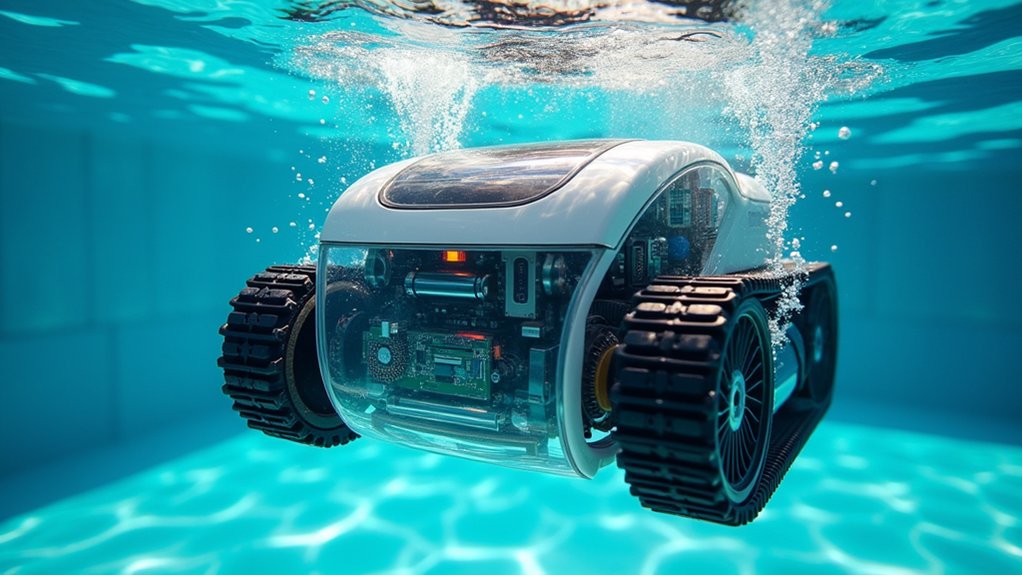
While robotic pool cleaners may appear to operate randomly, sophisticated navigation and control systems drive their autonomous functionality. The operational logic relies on advanced gyroscopic technology and mapping algorithms that continuously scan your pool’s dimensions, creating optimized cleaning paths in real-time. Modern robotic cleaners like the Dolphin Premier utilize SmartNav 2.0 technology to ensure intelligent navigation and precise mapping capabilities.
The autonomous intelligence of these devices stems from their integrated sensor arrays and smart algorithms. You’ll find they employ contact sensors to detect surface changes, while edge detection systems prevent collisions with walls and obstacles. Their self-learning capabilities enable them to refine cleaning routines through pattern recognition and dynamic memory storage. As they work, these robots adjust their pathways using shape-adaptive routing, ensuring thorough coverage regardless of your pool’s configuration. They’ll even prioritize areas with higher debris concentrations, maximizing cleaning efficiency through real-time optimization. This advanced technology comes with two-year warranty protection, ensuring long-term reliability and performance of your robotic pool cleaner. The advanced models feature anti-tangle swivel designs that allow unrestricted movement throughout the pool without cable interference.
Drive Systems and Movement Mechanics
Modern robotic pool cleaners rely on sophisticated track-driven systems that convert motor power into controlled movement across pool surfaces through precision-engineered gear trains. You’ll find these tracks equipped with specialized rubber treads and tension adjustments that enable secure grip during both horizontal and vertical cleaning operations. The unit’s navigation control system coordinates with the drive mechanisms to execute programmed cleaning paths while maintaining consistent surface contact through regulated water pressure. The drive system uses dual electric motors to independently power propulsion and debris collection functions. Built-in sensors allow the cleaner to create customized cleaning routes based on the pool’s unique geometry and dimensions. With its highly efficient design, the cleaner maintains low power consumption while delivering thorough cleaning performance.
Propulsion and Track Design
The intricate propulsion system of robotic pool cleaners relies on a sophisticated combination of drive motors, tracks, and mechanical components working in harmony. These propulsion mechanisms operate through 24V low-voltage motors that power the drive belts, which then transfer energy to the tracks for movement. For optimal security and performance, the system employs automated protection measures that prevent unauthorized access to control functions.
Track adaptability is essential for effective cleaning, achieved through:
- Transverse rollers enabling directional control and pool geometry adaptation
- Dual-drive systems distributing power evenly across uneven surfaces
- Drive belts and pulleys maintaining precise track alignment
- Sensor-triggered mechanisms facilitating smooth floor-to-wall shifts
You’ll find that this integrated system allows the cleaner to navigate multiple surface types while maintaining ideal contact pressure. The combination of drive motors and tracks guarantees efficient movement patterns, whether random or systematic, maximizing pool coverage without requiring complex programming.
Navigation Control Systems
Advanced navigation control systems integrate multiple sensor technologies and intelligent algorithms to orchestrate precise robotic pool cleaner movements. Through sophisticated sensor integration, your device’s WavePath™ Navigation 2.0 combines gyroscopic data with pressure sensors to maintain stability and detect obstacles. Most pool cleaners rely on random movement patterns for navigation due to their limited motor control capabilities.
| Feature | Primary Function | Secondary Function |
|---|---|---|
| SmartNav 2.0 | Energy optimization | Path efficiency |
| Gyroscope fusion | Orientation tracking | Stability control |
| Edge detection | Perimeter cleaning | Collision avoidance |
The navigation algorithms continuously process real-time data to adapt cleaning patterns. You’ll find your cleaner automatically adjusts its approach using AI-driven optimization and debris-responsive modifications. When encountering stairs or waterlines, the system’s edge-sensing capabilities trigger specialized movement protocols, ensuring thorough coverage while preventing entanglement. This intelligent combination of sensors and algorithms delivers consistent cleaning performance across varying pool configurations.
Advanced Navigation Technology
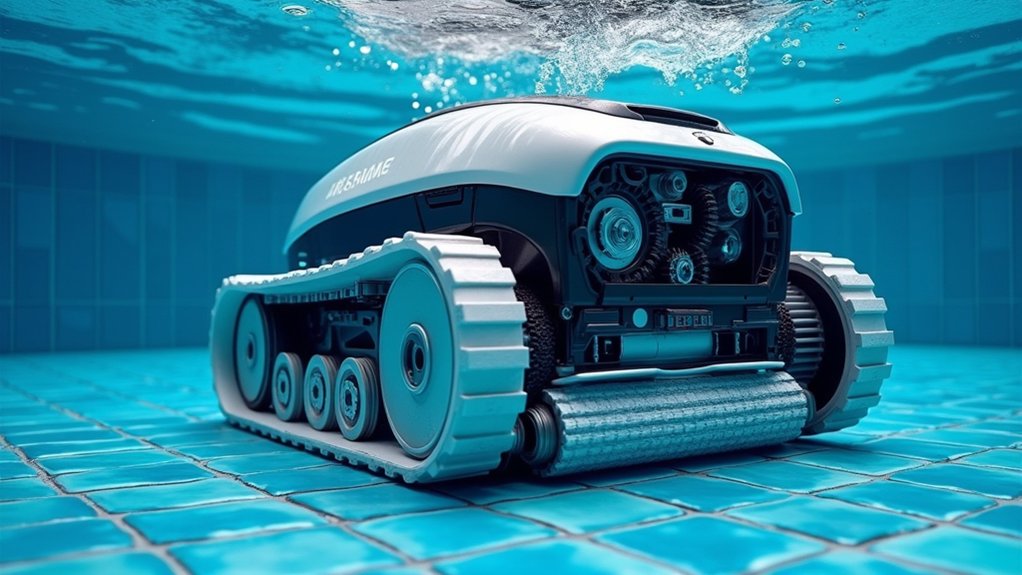
Modern robotic pool cleaners leverage sophisticated mapping systems that analyze your pool’s geometry and create optimized cleaning paths for maximum efficiency. You’ll find these cleaners equipped with advanced obstacle detection sensors that work in concert with intelligent algorithms to navigate around steps, drains, and other pool features without interruption. The cleaners’ waterline intelligence employs precision sensors and gyroscopic technology to maintain proper orientation while systematically scrubbing the critical water-tile intersection zone. The cordless design enables unrestricted movement throughout uniquely shaped pools without tangled power cords or hoses. These machines utilize powerful filtration systems to thoroughly remove dirt and debris during the cleaning process. For added peace of mind, these innovative pool cleaning solutions come with a two-year warranty that covers any mechanical or electronic defects.
Smart Mapping Systems
Smart mapping systems represent a revolutionary leap in robotic pool cleaner navigation, combining sophisticated algorithms with precision sensors to optimize cleaning efficiency. Through advanced technologies like SmartNav 2.0, your robotic cleaner creates detailed pool maps while implementing sophisticated cleaning optimization strategies.
The D9 Microprocessor enables intelligent movement patterns for maximum cleaning efficiency. Key features of smart mapping include:
- Gyroscopic sensors that track spatial orientation and maintain precise positioning during operation
- Intelligent mapping algorithms that detect and adapt to pool shapes, obstacles, and surface changes
- Coverage optimization systems that eliminate redundant cleaning paths while ensuring complete surface coverage
- Dynamic route planning that systematically addresses floors, walls, and waterlines
These smart mapping capabilities work in conjunction with rubber track systems and surface-detection sensors, enabling your cleaner to navigate complex pool geometries while maintaining consistent contact with all surfaces. The Dolphin Sigma demonstrates this technology’s full potential with its Wi-Fi connectivity features that allow real-time monitoring of cleaning patterns through smartphone integration.
Obstacle Detection Features
Building upon smart mapping capabilities, robotic pool cleaners employ sophisticated obstacle detection systems that combine infrared sensors, multi-sensor arrays, and algorithmic processing for seamless navigation. You’ll find advanced obstacle recognition techniques that utilize both above and below-water infrared scanning to detect and avoid obstructions while maintaining full pool coverage.
The sensor fusion methods integrate real-time environmental data with infrared inputs, enabling precise edge navigation and collision avoidance. The solar-powered charging ensures continuous operation as the cleaner works during nighttime hours while recharging during daylight. Your cleaner’s dynamic algorithms differentiate between debris types and adapt to varying water depths, storing obstacle data for future path optimization. Through solar-powered operation and app integration, you can monitor detection priorities and receive real-time obstacle alerts. The system continuously updates its detection algorithms through firmware improvements, ensuring increasingly efficient navigation around pool features and obstacles.
Waterline Cleaning Intelligence
Through sophisticated navigation algorithms and multi-motor systems, today’s robotic pool cleaners excel at waterline cleaning with remarkable precision. The integration of SmartNav technology and commercial-grade motors guarantees thorough waterline maintenance while removing stubborn algae deposits. Using advanced pH balance technology, these cleaners help maintain optimal chemical levels in your pool.
- Triple commercial-grade motors provide targeted scrubbing force at the waterline, physically removing biofilm and bacteria from crevices
- Pre-programmed cleaning modes specifically focus on waterline sections, optimizing coverage patterns for maximum efficiency
- Wi-Fi connectivity allows you to customize waterline cleaning schedules through the myDolphin Plus App
- Advanced mapping sensors automatically adapt to different pool surfaces, guaranteeing consistent contact at the waterline
You’ll find these robotic cleaners particularly effective at preventing waterline discoloration through their automated scheduling and powerful mechanical cleaning action, reducing your reliance on chemical treatments while maintaining pristine pool conditions.
Debris Collection and Filtration Process
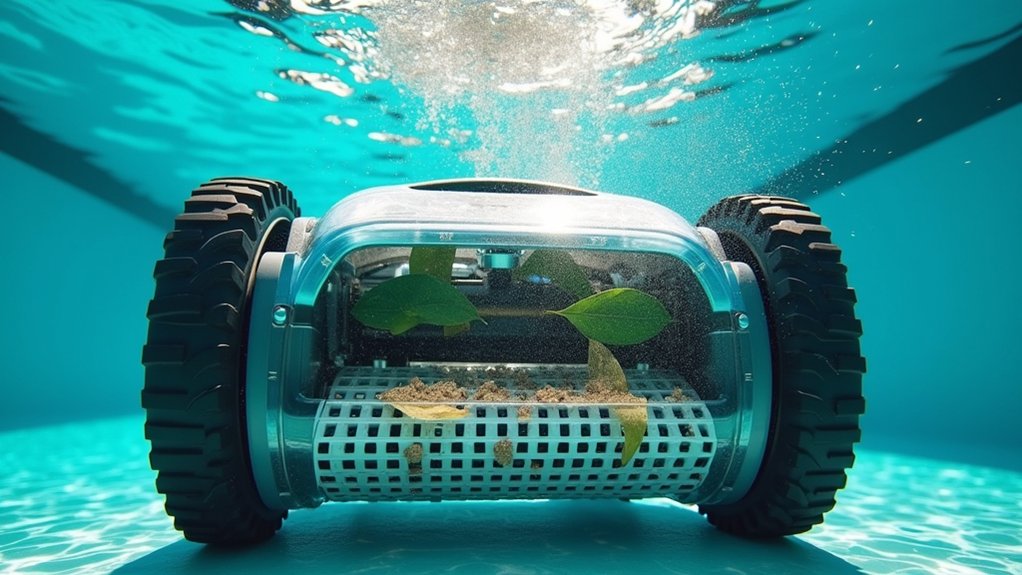
To effectively maintain a pristine pool environment, robotic cleaners employ sophisticated debris collection and filtration systems that combine multiple technologies. Your cleaner’s dual-stage filtration process handles varying debris types, from large leaves to microscopic algae spores, through specialized filter designs like cartridge-based systems or modular baskets. Top-loading filters have become increasingly popular due to their easy maintenance and accessibility.
The filtration efficiency depends on strategic pre-cleaning with skimmers and multi-stage capture mechanisms. You’ll find that high-GPH systems, such as those reaching 8,000 GPH, work alongside brush agitation to dislodge and collect stubborn particles. Modern cleaners utilize sensor-assisted technology and micron-rated filters to optimize debris detection and capture. For best results, you’ll need to maintain regular filter emptying schedules and follow manufacturer-recommended cleaning protocols to prevent clogs and guarantee consistent performance.
Smart Cleaning Patterns and Coverage
Modern robotic pool cleaners employ sophisticated navigation systems that coordinate multiple technologies to achieve ideal coverage patterns. These systems utilize smart coverage algorithms that adapt to your pool’s unique shape and features.
The intelligent routing system incorporates:
- Real-time mapping through PoolSense™ Technology to eliminate redundant cleaning paths
- V-shaped and U-shaped patterns for efficient wall and floor coverage
- Surface texture recognition to optimize brush pressure and suction power
- Dynamic obstacle detection and avoidance capabilities
Your robotic cleaner continuously analyzes pool geometry while executing efficient patterns, adjusting its route based on depth variations and structural elements. The system’s ability to retain memory of cleaned areas prevents wasteful overlapping, while zone prioritization guarantees high-traffic areas receive thorough attention. This smart technology maximizes cleaning effectiveness while minimizing energy consumption and wear on the unit.
Power Management and Energy Efficiency
While robotic pool cleaners have evolved considerably, their power management systems represent an important advancement in aquatic maintenance technology. You’ll find that energy enhancement is achieved through multiple sophisticated components, including ProLine™ commercial motors and smart route planning algorithms that minimize redundant movements.
Battery efficiency stands out as a vital feature, with sealed compartments protecting long-lasting cells that deliver over two hours of continuous operation. The integration of triple commercial-grade motors, coupled with brushless technology, guarantees peak torque while reducing power consumption. You’ll benefit from Wi-Fi connectivity that enables strategic scheduling of cleaning cycles, while NanoFilter™ systems decrease the overall energy load. The cordless design eliminates dependency on pool filtration systems, and efficient charging circuits maximize power transfer during recharge cycles.
Cleaning Methods and Surface Adaptation
Robotic pool cleaners employ sophisticated multi-modal cleaning systems that combine precision filtration, adaptive surface navigation, and intelligent debris management. You’ll find these units equipped with specialized components designed for peak surface compatibility and handling various debris types.
Modern pool maintenance reaches new heights with robotic cleaners that merge smart navigation, precision cleaning, and advanced debris handling capabilities.
- Dual-mode filtration systems adapt to different cleaning needs, using fine mesh for sand and coarse mesh for larger organic matter
- Surface-specific brush configurations pair nylon bristles with vinyl liners and polyurethane brushes with concrete surfaces
- Track or wheel systems enhance traction based on pool material, with rubber tracks excelling on fibreglass and wheels performing better on smooth finishes
- Smart navigation technology creates digital pool maps and adjusts cleaning patterns based on debris concentration, ensuring thorough coverage while avoiding obstacles
Frequently Asked Questions
How Long Do Robotic Pool Cleaners Typically Last Before Needing Replacement?
You’ll typically get 4-8 years from your robotic pool cleaner, with lifespan averages varying based on several replacement factors. High-end models often last 6-8 years, while budget units may only reach 3-5 years. You can extend your cleaner’s life by 2-4 years through proper maintenance, including regular filter cleaning and brush replacement. Daily usage will shorten the lifespan, while weekly operation helps maximize longevity.
Can Robotic Pool Cleaners Damage Pool Liners or Surfaces Over Time?
Yes, robotic pool cleaners can potentially damage your pool liner and cause surface wear over time, especially with vinyl liners. You’ll need to be particularly cautious if your liner is over 5 years old or if your pool’s chemistry isn’t properly balanced. To minimize damage, you should select cleaners with soft wheels rather than rigid brushes, maintain proper water chemistry, and guarantee your cleaner’s components aren’t worn or damaged.
What Maintenance Is Required for the Robotic Cleaner Itself?
You’ll need to perform regular maintenance on your robotic pool cleaner to guarantee peak performance. Clean the filters after each use by rinsing them with fresh water to prevent clogging. Check brushes weekly for wear and remove any tangled debris. Empty the debris basket regularly, and inspect power cables for damage. While most models don’t require battery replacement, you should have seals and motors professionally serviced annually or every 400-500 operating hours.
Do Robotic Pool Cleaners Work Effectively in Saltwater Pools?
Yes, most modern robotic pool cleaners work effectively in saltwater pools, provided they’re designed with saltwater compatibility features. You’ll find they’re built with corrosion-resistant materials that withstand salt concentrations up to 5,000 PPM. Their cleaning efficiency remains consistent in saltwater environments, though you’ll need to perform more frequent maintenance checks to prevent salt buildup. Premium models typically include enhanced protection against salt-related wear, ensuring reliable long-term performance.
How Do Extreme Temperatures Affect Robotic Pool Cleaner Performance?
Extreme temperatures can greatly impact your robotic pool cleaner’s performance efficiency. In cold conditions, you’ll notice reduced flexibility in moving parts and potential brittleness in plastic components. High temperatures can cause warping of structural elements and accelerate wear on internal mechanisms. While pool water temperature above freezing won’t restrict operation, ambient temperature extremes require you to adjust maintenance schedules and may affect the cleaner’s overall durability and reliability.
